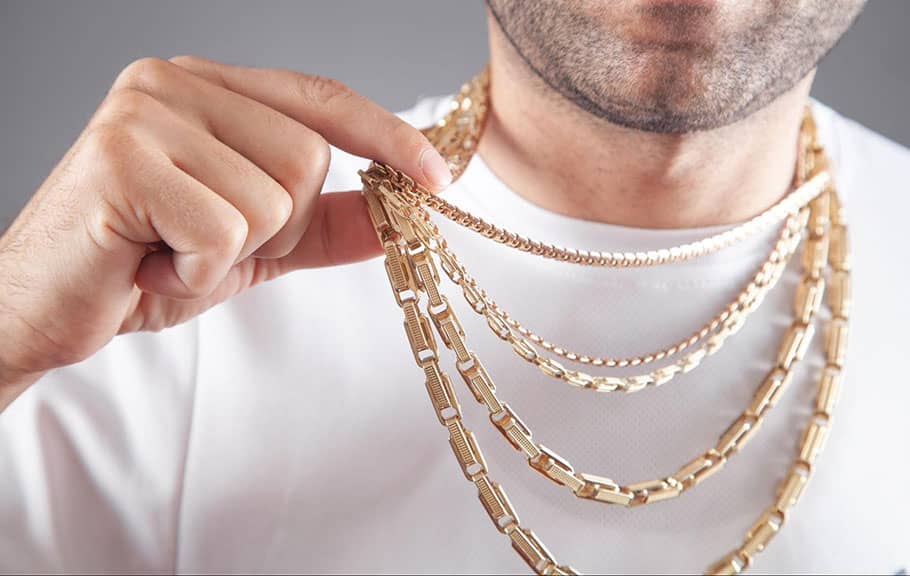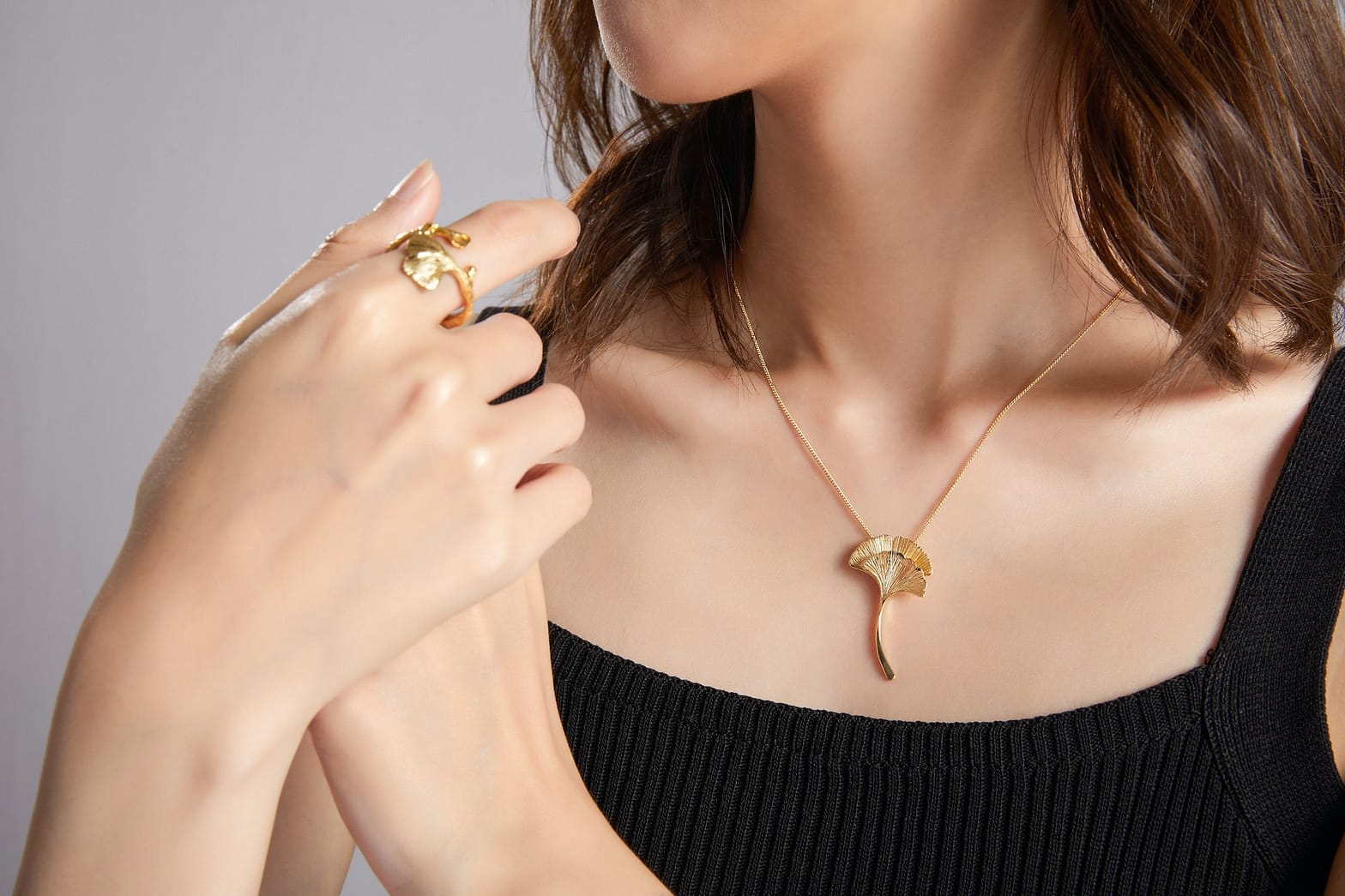Jewelry is an important part of self-expression and identity. Have you ever wondered how jewelry can be used to express yourself and your identity? This article will explain the role of jewelry in self-expression and identity. From the symbolism of jewelry in different cultures to the use of jewelry as a form of personal expression, you will learn how jewelry can be used to show your individuality.
1. The Psychology of Jewelry
The psychology of jewelry is an interesting field of study. Jewelry has been used throughout history to express one’s identity and self-expression. It can represent an individual’s power, status, and wealth, and even serve as a symbol of love and commitment. Jewelry can also be used to express one’s personal style and tastes, and can even be used to commemorate special occasions or memories.
The psychology of jewelry is also closely linked to its symbolism. Jewelry can be seen as a way to express one’s feelings and emotions, and it can be used to communicate messages to the world. For example, a ring may be used to signify marriage, a bracelet to signify friendship, and a necklace to signify protection. Jewelry can also be used to convey a sense of belonging and identity, and can be used to represent one’s culture or heritage.
The psychology of jewelry is also linked to its aesthetic value. Jewelry that is aesthetically pleasing can be seen as a way to express one’s individuality, and can also be seen as a form of art. Jewelry can also be used to enhance one’s physical appearance, and can be used to make a statement or to make a fashion statement.
In addition, the psychology of jewelry can also be linked to its cultural significance. Jewelry can be seen as a way to connect with one’s ancestors, or to represent a particular culture or religion. It can also be used to signify a particular event or occasion, or
2. Jewelry as a Symbol of Status
Jewelry is often seen as a symbol of status, with certain pieces being associated with wealth and power. The wearing of jewelry has been a practice for thousands of years, with people using it to signify their position in society or to show off their wealth. In some cultures, the wearing of jewelry can even be used as a form of protection.
Historically, jewelry was worn by members of the upper classes to signify their wealth and power. However, this is no longer the case, as jewelry is now available to everyone. While some pieces may still be considered status symbols, there is no longer a direct correlation between wealth and jewelry.
Nowadays, jewelry is seen more as a form of self-expression and identity. People choose pieces that reflect their personal style and tastes, rather than those that signify wealth or power. Jewelry can also be used to make a statement, with people choosing pieces that reflect their beliefs or values.
It is clear that jewelry has come a long way since its origins as a sign of status. While it may still be used as a symbol of wealth and power in some cultures, it is now primarily used as a form of self-expression and identity.

3. Jewelry as a Reflection of Culture
Jewelry is often a reflection of culture, as it is used to commemorate important events or to signify status. It is often used as a way to express religious beliefs, cultural pride, or a connection to a particular group or tradition. For example, many Indigenous communities in Australia wear jewelry to signify their cultural identity.
Jewelry can also be used to commemorate a special event or time in someone’s life. For example, a mother may give her daughter a necklace to commemorate her graduation. Similarly, a couple may exchange rings when they get married as a symbol of their love and commitment. These types of jewelry are often used to mark special occasions or to show a personal connection to someone or something.
In some cultures, jewelry is also used as a form of adornment. This can include necklaces, earrings, bracelets, and rings. These pieces of jewelry are often decorated with symbols or colors that reflect the wearer’s culture or religion. For example, in some cultures, gold jewelry is viewed as a sign of wealth and status, while in others, certain types of gemstones are believed to have special powers or spiritual significance.
Jewelry can also be used to show belonging or affiliation to a certain group. For example, certain pieces of jewelry may be worn by members of a particular family or tribe, or by people who are part of a particular organization or club. This type of jewelry can often be seen at special events or ceremonies, and can be used to signify a shared identity or membership.

4. Types of Jewelry for Self-Expression
Jewelry plays an important role in self-expression and identity. It is often used to demonstrate one’s individuality, style, and personality. There are many types of jewelry available that can help individuals to express themselves and feel more connected to their identity.
- Earrings: Earrings are a popular choice for expressing oneself. They come in a variety of shapes, sizes, and colors, allowing individuals to choose pieces that reflect their individual style.
- Necklaces: Necklaces are another way to express one’s individual style. They can range from simple and elegant to bold and colorful.
- Bracelets: Bracelets are a great way to express one’s identity. They can be worn alone or stacked for a more unique look.
- Rings: Rings are a timeless piece of jewelry that can be used to express one’s style. They come in a variety of shapes, sizes, and colors, allowing individuals to choose pieces that reflect their individual style.
- Anklets: Anklets are a great way to express one’s individual style. They can be worn alone or stacked for a more unique look.
Jewelry is a powerful tool for self-expression and identity. It can be used to express one’s individual style, personality, and values. Whether it’s earrings, necklaces, bracelets
5. Jewelry as an Expression of Personality
Jewelry has long been used as an expression of personality. From the ancient Egyptians to the present day, different cultures have used jewelry to show off their unique style and identity. Jewelry can be a reflection of a person’s values and beliefs, as well as their taste in fashion and style. It can also be used to show off a person’s wealth and status.
The type of jewelry a person chooses to wear can be a reflection of their personality. For example, some people may choose to wear bold, eye-catching pieces, while others may prefer more subtle and delicate designs. Similarly, some people may prefer to wear jewelry with a more classic design, while others may prefer more modern and contemporary pieces.
The materials used to create jewelry can also be an expression of personality. Some people may prefer to wear jewelry made of precious metals such as gold or silver, while others may prefer more affordable materials such as copper or brass. Similarly, some people may prefer to wear jewelry with precious stones, while others may prefer more affordable materials such as glass or plastic.
The colors used in jewelry can also be an expression of personality. Some people may prefer to wear jewelry in bright and vibrant colors, while others may prefer more subtle and muted tones. Similarly, some people may prefer to wear jewelry with a more traditional color palette, while others may prefer more modern and unique color combinations.
Overall, jewelry can be a reflection of a person’s personality and individuality. It can be used to show off a person
6. Jewelry as a Form of Protest
Jewelry has long been a form of self-expression, but it can also be a powerful form of protest. Throughout history, people have used jewelry to communicate political, social, and cultural messages. From suffragette brooches to Black Lives Matter necklaces, jewelry can be a way for individuals to show their support for a cause or to challenge the status quo.
One example of jewelry as a form of protest is the use of safety pins as a symbol of solidarity with marginalized groups. After the 2016 US presidential election, many people began wearing safety pins on their clothing as a way to show that they were allies of those who felt threatened by the election results. The safety pin movement quickly spread to other countries, including the UK and Australia.

Another example is the use of jewelry to protest environmental issues. Some jewelry designers use recycled or sustainable materials in their creations to raise awareness of the impact of the fashion industry on the planet. Others create pieces that directly reference environmental issues, such as bracelets made from ocean plastic.
Whether it’s a subtle symbol or a bold statement, jewelry can be a powerful tool for protest and self-expression. By wearing jewelry that represents their values and beliefs, individuals can communicate their message to the world.
Conclusion
Jewelry has played a pivotal role in self-expression and identity throughout history. Its significance extends beyond mere adornment, serving as a reflection of one’s personality, values, and beliefs. The psychology of jewelry reveals its power to represent individual power, status, and emotions, often communicating profound messages to the world. Historically, jewelry has been a symbol of status, with certain pieces denoting wealth and power. However, in contemporary times, it has evolved to be more about personal style and individuality.
Jewelry also mirrors cultural values, with different pieces signifying cultural pride, religious beliefs, or affiliations. The various types of jewelry, such as earrings, necklaces, and bracelets, offer individuals myriad ways to express their unique style and identity. Furthermore, jewelry has emerged as a potent form of protest, allowing individuals to voice their support for various causes or challenge societal norms. Through pieces that symbolize solidarity or highlight environmental concerns, jewelry becomes a powerful tool for advocacy and change. In essence, jewelry is not just an accessory but a profound medium for self-expression, cultural representation, and even activism.
